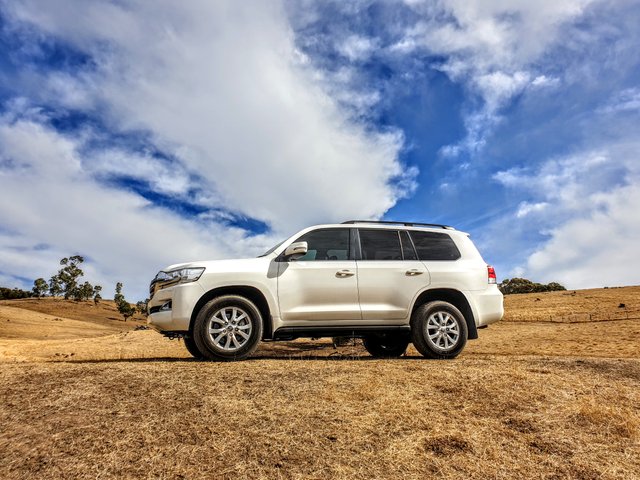
All journey's start with one simple thing...The beginning. Whether it's an adventure around the globe to faraway places, the corner store for a litre of milk and the Sunday paper or a journey of enlightenment undertaken within oneself for that journey to make its way anywhere it has to start. Today I did just that very thing...Embark on a journey.
This image shows my 200 Series Landcruiser four wheel drive purchased new in mid 2018. It's factory-standard as you see it with a 4.5L twin-turbo diesel V8 engine and a plethora of tricky bits to make it super-comfortable and extremely capable off the road in pretty much any terrain. Having said that, to become the terrain-eating off road/touring beast I need it to become, to get me around this amazing land I call home (Australia), I need to enhance it further. Today I started the build-up which will take me...Well, a while I guess. It's not a cheap exercise you see.
Considering the expense of a complete build-up I've decided to go about this build-up strategically rather than in a wholesale fashion in which I did the last vehicle build-up; My Ford Ranger. On that particular vehicle I had $24,000 of accessories and equipment which all went on inside of about 6 weeks however this time I simply don't have the funds to do so and therefore I will add my accessories strategically and with some thought into what I need now and what I don't.
So, with that in mind I decided today to add three systems that will value-add the vehicle from a usability perspective and that will be utilised immediately.
Dual battery system:
I like to run a fridge/freezer on my off-road vehicles and therefore need an auxiliary battery system to run it. It can't tap into the cranking battery of the vehicle as those batteries are not designed for sustained power draw and besides, if they get below a certain voltage the car simply won't start. So, an auxiliary battery system, (dual battery system using a deep-cycle battery) is the answer.
Essentially a second battery is installed in the vehicle and a 12 volt socket is run from it to the back load-space of the vehicle which is where the power cable of the fridge/freezer is plugged in. My fridge/freezer is the ARB 60L model so is capable, with correct packing, to easily carry enough perishable food for over a week of remote travel for two people. obviously an important requirement for remote travelling where one may be several hundred kilometres away from the nearest civilisation.
There are a few problems to overcome when installing a dual battery system, the main one being the fact that vehicle manufacturers now fit temperature sensing, or low voltage, alternators which aid in them meeting emission-control requirements. These smart alternators either stop working altogether or reduce voltage when the car is running which means the second battery won't receive enough voltage to actually charge to capacity. A partially-charged battery will not run the fridge for long enough and so this issue needs to be overcome.
Just a note, when the vehicle is running the fridge is powered from the second battery and when that battery depletes it simply recharges off the vehicle. When the car is off the fridge draws power from the battery which, of course, is not getting charged any more. Once the vehicle starts, or a solar panel is connected, then the battery will start to charge again and replenish. I use a 105 AH (amp hour) battery which, based on 30 degree days, will run my fridge for 5-6 days non-stop without a recharge. (Based on minimal opening of the fridge.)
OK, so how do we overcome the smart alternator? It's simple...We use a BCDC battery charger. The image below shows my unit of choice by REDARC - The best in the business.
This unit essentially takes the reduced voltage from the alternator and boosts it to the correct voltage to effectively charge the auxiliary battery leaving it fully charged and ready to go. It does other stuff but that's the main function. BCDC stands for Battery Charger DC and I chose the 1225D with the D standing for dual which means it can accept power from the alternator and solar input also. It gives priority to solar power so if I had a solar panel mounted on the roof of the vehicle it would accept that power prior to alternator power during the day. At night it would automatically switch to the alternator power. Smart huh?
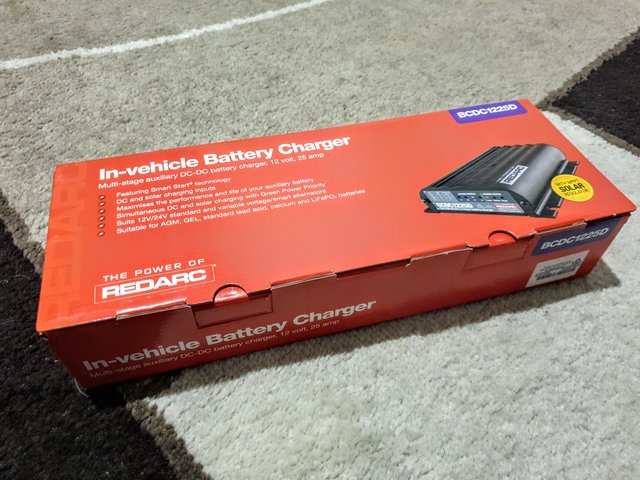
This is the unit which will be mounted right next to the battery (the second battery). There's a lot of wires and the installation is complex enough that I'll be using an automotive electrician to do the job.
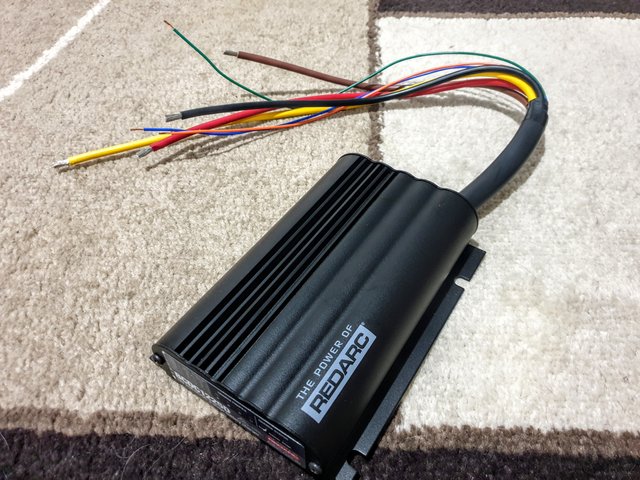
This is the interface of the unit. These LED's will light depending on what the unit is doing. You can see three stages...Solar, vehicle and stage which is when the battery is full and the charger just sort of floats until it needs to inject more power.
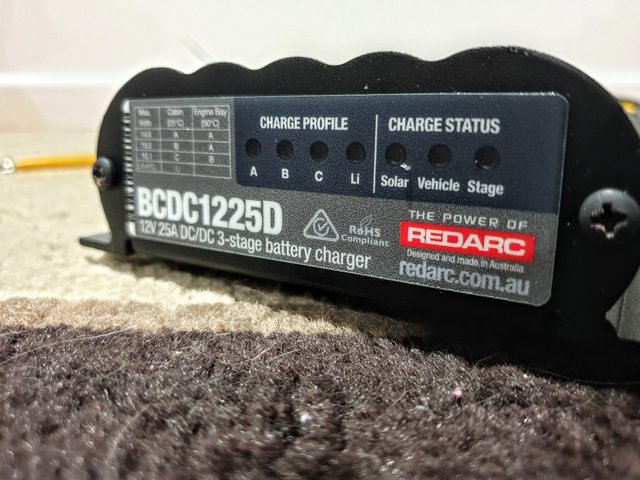
I've toured the REDARC factory which happens to be here in Adelaide and the manufacture of this unit, and all their products, is simply amazing. Their quality is second-to-none and the functionality of their products is consistent and dependable.
I'm going to have a 50amp Anderson plug fitted to the positive and negative terminals of my second battery also which will allow me to plug in my (regulated) solar panels when I'm camped so I'll be able to supplement the battery power with solar energy effectively giving me endless power to run the fridge/freezer and LED lighting.
The fitted dual battery system is a $2,150 system although, because I worked in the industry a while back and know people, I have paid somewhat less than that fortunately.
TowPro Elite:
This is the second of the systems I'm fitting next week and is a critical safety system. Because I tow an off-road camper trailer with its own electronic braking system I need a system on-board the vehicle to control the trailer system. That's where the TowPro come in.
What this little unit does is tell the trailer brakes to do exactly what the tow-vehicle's brakes are doing. The trailer will brake with the exact amount of force commensurate with the amount of braking input I've used in the vehicle. Clever right? I can also increase or reduce the * brake bias* to the trailer. This avoids the trailer braking too much and locking up its wheels destabilising the tow-vehicle or braking too little and pushing the tow_vehicle through the trailer hitch. Both could be dangerous situations.
It has two modes which allow for inertia-sensing or user controlled (manual). This means it's a set and forget unit generally, self-calibrating to the weight of the trailer being towed, or can be used manually meaning a press of the button will apply the trailers brakes independently from the tow-vehicles. This feature would be used if I was descending a steep decline and wanted to prevent the trailer pushing on the tow-vehicle. I'd apply manual braking and let the trailer drag a little.
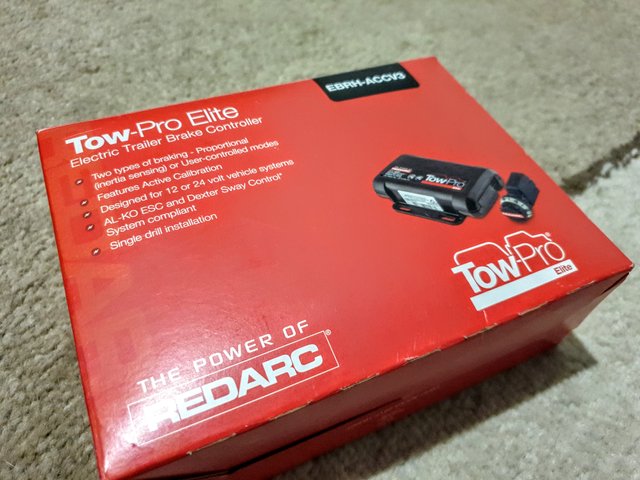
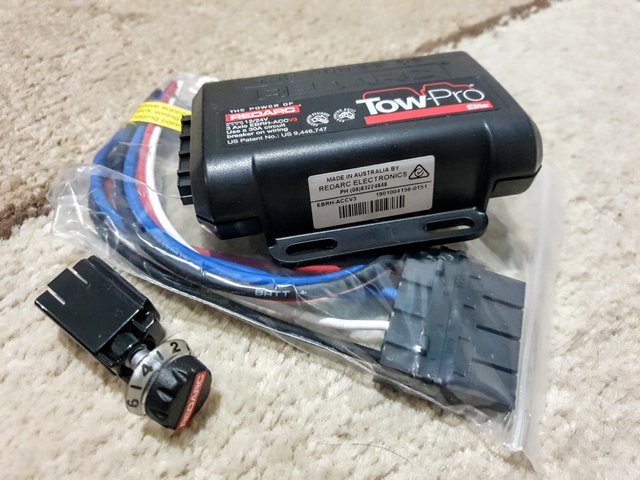
The unit is controlled by this very small head unit which is located inside the car with the rest of the unit set up underneath the dashboard panels. This one pictured below was installed in my Ranger. The one on my Landcruiser will be located differently. On the dial it shows numbers from 0-10 which is how I would control the proportion of braking on the trailer with 10 being more and 0 being none. A simple press of the button engages the brakes on the trailer without the tow-vehicles brakes activating. This unit and installation is about $600.
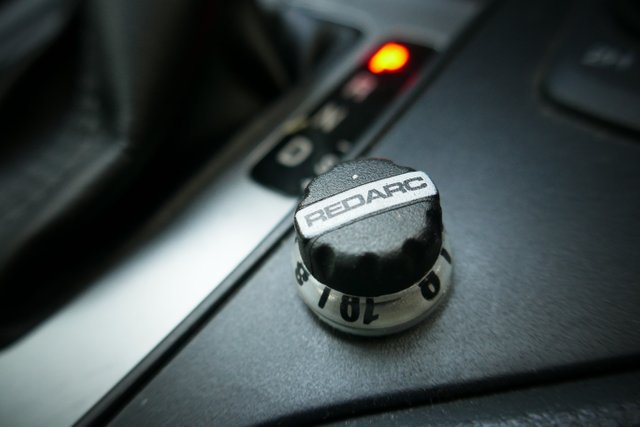
Fridge slide:
This system is pretty much exactly what it sounds like. It's a slide that the fridge/freezer get's mounted on in the rear load space of my Landcruiser. The slide locks into place in the closed position for travelling and when needed it is unlatched and slid rearwards out of the back of the vehicle for easy access. It's a simple addition but makes access to the fridge unit easier considering the increased height of my vehicle. This height will be increased once the lifted suspension goes on making a fridge slide even more important. Again, I am calling in favours on this item so instead of $650 fitted I'm only paying around $300 which is essentially parts and no labour. Pays to have worked in the industry and have mates.
I'm looking forward to having my fridge back on board as it is simply so handy, and it's amazing how popular I am on hot days when I'm handing out ice cold beverages! Seriously though, whilst these systems may seem elaborate and unimportant they are critical to safe outback travel. The old cool-box with a block of ice in it doesn't cut it in the middle of the Simpson desert, the Tanami Track or any other remote area. Besides, it allows flexibility when travelling and means we can take a lot of our own food rather than buying it all the time.
If you have ever sat around a campfire eating a steak and sipping a cold brew, in the middle of nowhere, hundreds of miles away from the nearest person under a canopy of a million stars...Well, this will all make sense. If you haven't...Well, you are missing out on one of life's true pleasures.
There's a lot of other equipment I will fit to my Landcruiser however for now these few things will mean I can tow my camper and store our food...I sold my Ranger just over a month ago and have really missed it so having this build-up underway is an exciting step. The build-up journey is just a stepping stone to the real thing though...The trips to remote and unpopulated areas and the amazing experiences that await us.
Neat mods, and certainly it'll be important for quality of life when you're out in the woods, far from civilisation. I see you've made three crucial mods, and two of them have to do with the fridge. That tells me a lot about a person, when a fridge is their priority in life. It tells me that they care about food, and the understand the need for crucial sustenance in life. I like those people.
Any plans on adding other mods? If you're going far out, having an on-board winch would be key. There's always a chance that you could get stuck between a rock and a hard place, so I think a winch would be superbly helpful in those cases. Not sure how much they cost, though.
Downvoting a post can decrease pending rewards and make it less visible. Common reasons:
Submit
I'll have $20,000 more mods on it. The full thing.
Downvoting a post can decrease pending rewards and make it less visible. Common reasons:
Submit
Sweet, I'd love to see more of it! $20k sounds like a huge amount of dosh, but I guess it's cheaper than the supposed price of your old Ranger, eh?
Downvoting a post can decrease pending rewards and make it less visible. Common reasons:
Submit
When I worked at ARB I'd often build up LC200's with $30,000-$32,000 worth of gear. So, $20,000 is cheap. Of course I'll get good discounts along the way because of who I know.
Downvoting a post can decrease pending rewards and make it less visible. Common reasons:
Submit
It's pretty worthwhile to have good connections. I'll be awaiting the full build. On that note, I was wondering as to your thoughts on the new Suzuki Jimny. It's affordable, cute, maybe a bit too small, though surprisingly capable off-road. Not as luxurious, nor as grand as the Landcruiser, though.
Downvoting a post can decrease pending rewards and make it less visible. Common reasons:
Submit
i like the old-school Sierra, dont know much about the Jimny.
Late reply because I dont check replies often on this diseased and pathetic excuse for a blockchain.
Downvoting a post can decrease pending rewards and make it less visible. Common reasons:
Submit